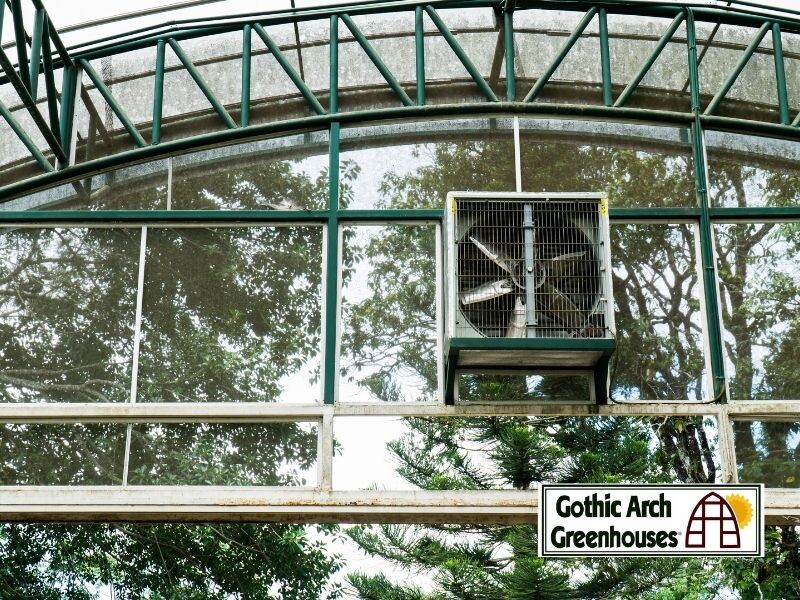
Written by H & B . Sierke (Gothic Arch Greenhouses INC.)
Helping your greenhouse stay cool is paramount for plant health and growing success in the warmer—and sometimes downright hot!—days of summer.
Of course, your challenges will vary depending on your local climate, but cooling a greenhouse will require a combination of shade, ventilation, and humidity that works in your particular growing zone.
Regardless of where you are, plants in an overheated greenhouse will experience a loss of stem strength, a reduction of flower size, and a delay in flowering.
To lower the temperature in your greenhouse, consider the following cooling systems and their benefits.
Vents: Traditionally, vents placed in the roof have allowed the warmer air that rises to escape while drawing in cooler air from side vents. Vent positions can be changed manually or mechanically to maximize benefits from wind direction naturally. Though vents carry lower operational costs, construction costs may be higher. Using natural ventilation alone will not lower indoor temperature than outdoor temperature. A system that combines exhaust fans with vents helps increase the efficiency of excess heat removal but may still need to be used in conjunction with another cooling method.
Shading: Paints, blinds, or cloths are another low-energy cooling option for your greenhouse. Shade paints are a quick way to filter the sun’s strength and can be applied in more layers in higher heat and washed and brushed off during more superb spells. Internal or external blinds can also help. External blinds are the most effective but may obstruct efficient vent operation. Shading can help make other cooling systems more efficient by reducing the sun’s intensity and retaining heat overnight. Take care that light is not reduced to undesirable levels, such as on cloudy days, early mornings, or near nightfall when sunlight is not as intense.
Evaporative Coolers: Fan-and-pad systems are the most common for summer cooling. These systems use the heat in the air to evaporate water from plants and other wetted surfaces to lower the greenhouse temperature. Pads mounted on a sidewall are supplied with water, and air drawn through the pads by fans on an opposite wall can drop the indoor temperature by 10 to 20 degrees below what’s outside. Evaporative cooling systems are ideal for drier climates but can provide cooling anywhere in the U.S.
Misting or Fogging: These systems use high-pressure water delivery to emit fantastic water particles, and the drops evaporate in the air, reducing the temperature. When used with fine nozzles, this low-cost solution can introduce additional humidity in the greenhouse, and moisture can help reduce the frequency of watering plants. Some of the benefits of this option include preventing plants from drying out or wilting, like some vented systems, operating costs are lower than fan-and-pad cooling, achieving nearly 100 percent cooling efficiency, and allowing wet bulb temperatures to be obtained.
Warmer weather is coming! Is your greenhouse prepared? Call us today toll-free at 1-800-531-4769 to talk with one of our representatives, or visit our website at www.GothicArchGreenhouses.com to get your plants and greenhouse ready to take the heat!
